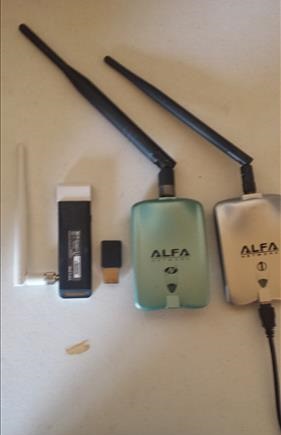
- #Lb link wifi adapter with debian stretch how to#
- #Lb link wifi adapter with debian stretch portable#
The counterparts are “ifconfig eth0 down” and “ifdown eth0”. Up to Debian 8, use “ifconfig eth0 up” or “ifup eth0” to enable the interface. There are two commands to enable and disable an interface, manually. Interface configuration using ip:Īs already described above the option “auto” enables an interface on startup, automatically. Interface configuration using ifconfig :įrom the release 9 onwards, the command “ifconfig” is no longer preinstalled, and replaced by its predecessor “ip”. See the configuration for the first ethernet interface below. Up to the release 8 of Debian GNU/Linux use the command “/sbin/ifconfig” to display the interface configuration. The configuration file /etc/interfaces also allows setups for the Bootstrap Protocol ( BOOTP) (bootp), PPP (ppp) as well as IPX. Among others the list includes the hostname to be requested (hostname), the metric for added routes (metric), the preferred lease time in hours or seconds (leasehours, leasetime), the client identifier (client), or the hardware address (hwaddress). Similar to the static configuration from above a number of options are possible to be set. The following line will bring up the loopback interface /dev/lo, only: The setup scripts will call the command “ifup -a” (short for “–all”) that will activate the mentioned interfaces. In order to automatically enable an interface add the keyword “auto” (short for “allow-auto”) followed by the logical name of the interface(s). Debian Network Configuration in detail Automatic enabling of an interface on startupĪt startup of your system the setup scripts go through the configuration files for the network interfaces. The image below is taken from a Debian GNU/Linux 9.5.’ The basic network configuration on a Debian GNU/Linux 9.5:Īs the next step we will have a look at the single statements to configure a desired interface. The configuration for these interfaces looks as follows. The list of available network interfaces: For the network interfaces available have a look at the file “/sys/class/net” - in our case the interfaces are named /dev/lo and /dev/enp0s3. The new names are similar to these ones - /dev/enp6s0, /dev/enp8s0, /dev/enp0s31f6, and /dev/enp5s0. As of Debian 9 “Stretch” the old network names like /dev/eth0, /dev/eth1 and /dev/wlan0 have gone away as the device name can change. A detailed explanation for the single commands is given below.įor other Debian GNU/Linux releases or distributions based on it the file “interfaces” may look similar but with different names for the network devices. The lines 3 to 5 configure /dev/lo, lines 7 to 9 /dev/eth0, and line 11 the interface /dev/wlan0. Line 1 refers to include all the scripts that are stored in the directory /etc/network/interfaces.d/. It consists of one loopback interface (/dev/lo), an ethernet interface (/dev/eth0), and a wireless interface (/dev/wlan0).
#Lb link wifi adapter with debian stretch portable#
A typical IPv4 configuration from a portable device is shown below.

You can store all of it in the single file named interfaces, or as separate files in the directory interfaces.d. The specific configuration is done per network interface.
#Lb link wifi adapter with debian stretch how to#
In this article we explain to you where to find the appropriate information, and how to set it up for IPv4 IPv4 and IPv6. The knowledge regarding the setup of a network interface in Debian GNU/Linux and Debian-related distributions is essential for every Linux engineer.


 0 kommentar(er)
0 kommentar(er)
